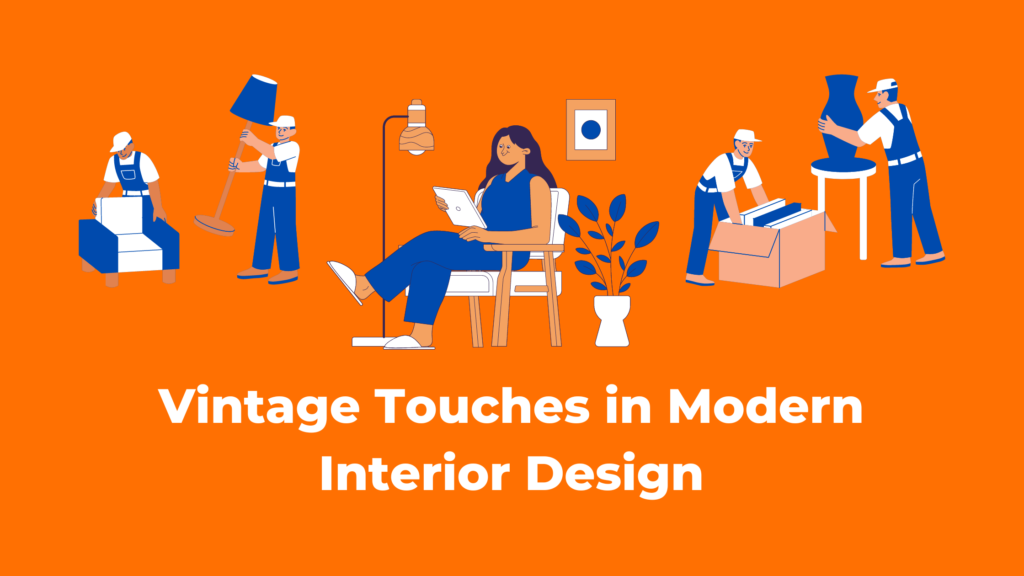In the world of interior design, trends come and go, but there is a timeless allure to classic elegance that never fades. While modern design often prioritizes sleek lines, minimalism, and contemporary aesthetics, there is a growing trend of embracing vintage touches to create a unique and captivating space. Incorporating elements from the past add character, warmth, and a sense of history to modern interiors. In this article, we will explore the art of reviving classic elegance by incorporating vintage touches into modern interior design.
The Appeal of Vintage Touches
Vintage touches in interior design have a certain charm that captures the imagination and creates a captivating ambiance. They evoke a sense of nostalgia, taking us back to a different era and telling a story of the past. Vintage elements can range from furniture and accessories to architectural details, colors, patterns, and textures. By incorporating these elements into modern spaces, designers and homeowners can create a sense of depth, personality, and timelessness.
Bringing History into the Present
One of the key aspects of reviving classic elegance is the ability to seamlessly blend the old with the new. Modern interior design often features clean lines, open spaces, and a neutral color palette. By introducing vintage touches, such as antique furniture, ornate mirrors, or vintage-inspired wallpaper, designers can add layers of history and create a visually dynamic space.
One approach to successfully incorporate vintage elements is to focus on one or two key pieces that act as focal points in the room. For example, a beautifully restored antique dining table paired with modern chairs creates an interesting contrast that becomes a centerpiece of the dining area. Similarly, a vintage chandelier hanging in a contemporary living room can add a touch of grandeur and create an intriguing visual juxtaposition. Another way to incorporate vintage elements is by hanging up vintage pictures and artwork using picture rail installation. This adds a nostalgic touch but also allows for easy swapping and rearranging of the pieces to refresh the space.
Balancing Vintage and Modern
While the allure of vintage elements is undeniable, it is crucial to strike a balance between vintage and modern elements to avoid creating a space that feels outdated or cluttered. The key is to curate vintage pieces thoughtfully and combine them with modern design elements. By doing so, the vintage touches become accents that add character and interest to the overall design.
For example, in a modern kitchen, vintage-inspired subway tiles can be used as a backsplash, adding a touch of nostalgia while maintaining a sleek and clean aesthetic. Vintage-inspired light fixtures can also be incorporated to create a focal point or provide ambient lighting. The key is to select pieces that complement the overall design concept and create a harmonious balance between vintage and modern elements.
The Power of Patina and Texture
One of the unique qualities of vintage elements is the patina and texture they acquire over time. Vintage furniture, with its worn edges, weathered finishes, and distressed surfaces, carries a story and a sense of authenticity. Embracing these imperfections adds depth and character to a space.
Incorporating vintage textiles, such as velvet, silk, or embroidered fabrics, can also enhance the visual and tactile experience. Vintage-inspired wallpapers with intricate patterns and textures can create a statement wall or add visual interest to a room. By combining different textures and finishes, designers can create a layered and visually stimulating space.
Preserving the Past: Restoration and Repurposing
Vintage elements often require some level of restoration to ensure their functionality and longevity. Restoring vintage furniture, for example, can involve repairing loose joints, refinishing surfaces, or reupholstering worn fabrics. This process not only brings new life to the piece but also ensures that it will be enjoyed for years to come.
Repurposing vintage elements can also be a creative and sustainable approach. For example, an old wooden door can be transformed into a unique coffee table, or vintage suitcases can be stacked to create a stylish storage solution. Repurposing not only adds a touch of originality to a space but also reduces waste and embraces the principles of sustainability.
Conclusion
Incorporating vintage touches into modern interior design is a way to revive classic elegance and create spaces that are unique, captivating, and full of character. Vintage elements add depth, warmth, and a sense of history to modern interiors, evoking nostalgia and telling stories of the past. By carefully curating a collection of vintage pieces, striking a balance between vintage and modern elements, and preserving the authenticity of the past, designers and homeowners can create spaces that are truly timeless. Embracing vintage touches allows us to celebrate the beauty of the past while living in the present.

Pardeep is the founder and editor of Small Investment Ideas. He believes that everyone can change their life with the help of small investments and achieve financial freedom.
